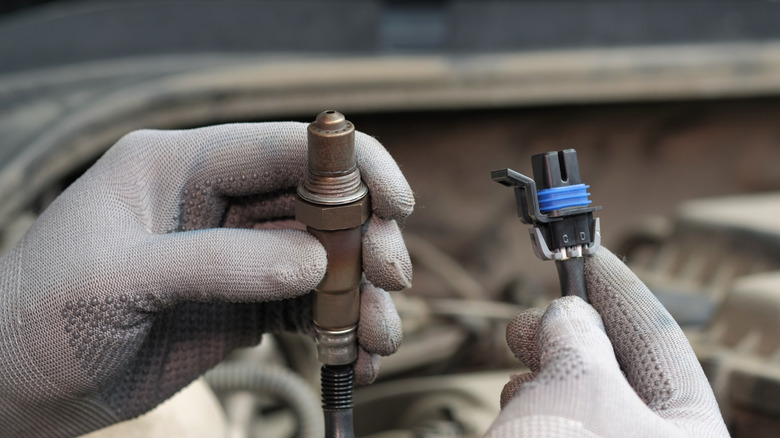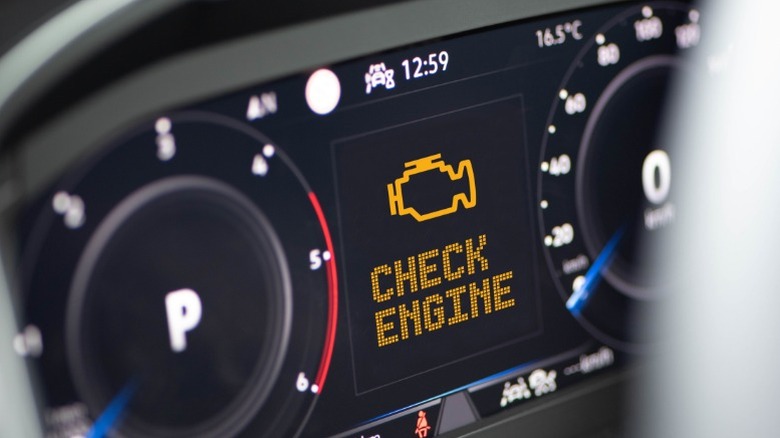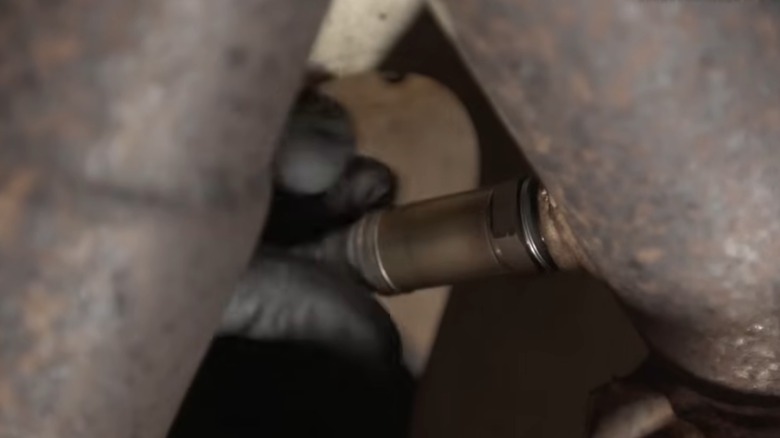Is It Okay To Drive A Car With A Faulty O2 Sensor?
We may receive a commission on purchases made from links.
Modern cars are designed to be more efficient and eco-friendly than ever. Automakers build vehicles with a wealth of advanced features to not only keep us safe on the road and provide a pleasant driving experience, but also to adhere to government guidelines about fuel emissions and pollution. As a result, modern cars come with complex emissions systems engineered to prevent dumping excess pollutants into the atmosphere. One of the components of these systems is the oxygen sensor or O2 sensor.
Most modern vehicles have at least two O2 sensors: an upstream sensor and a downstream sensor. These devices monitor the oxygen content in the emissions that leave the engine, as well as those leaving the catalytic converter(s). Your car's computer or powertrain control module (PCM) uses the data collected by the O2 sensors to make adjustments to the combustion process and track the health of the catalytic converter(s). Despite being both vital and robust parts of your vehicle's exhaust and emission control systems, O2 sensors don't last forever. Depending on your car and its age, your O2 sensors will likely last for between 30,000 and 100,000 miles.
When one or more O2 sensors do fail, it can cause some unpleasant symptoms for your car. While you technically can drive with a faulty O2 sensor, it's something that you should avoid doing whenever possible. Why is that? Well, a bad O2 sensor can result in various issues, which can range in effect from being mildly inconvenient to being downright dangerous for your vehicle. As a former professional auto repair technician, that's exactly what I'm going to help explain.
What can happen if you drive with a bad O2 sensor?
Your car will still run with bad O2 sensors, but that doesn't mean it's a good idea to drive your vehicle in that state. That's because driving with faulty O2 sensors exposes your car to various risks, many of which can lead to substantially worse and more expensive damage if left unaddressed. Besides a lit check engine light, worn-out O2 sensors are likely to cause problems like engine performance issues and drops in fuel mileage. While a check engine light may only be annoying, performance problems and increased fuel consumption can both lead to physical damage which could cost you a pretty penny down the road.
A faulty O2 sensor can disrupt the air/fuel ratio inside your engine. That can throw off everything from engine timing to the combustion cycle and more, and it can lead to problems like engine misfires, stalling, reduced acceleration, poor gas mileage, and overall poor performance. Over time, these issues can lead to deeper damage. For example, a bad O2 sensor can cause your engine to run rich, meaning there's too much fuel and not enough oxygen. That can lead to efficiency problems, as well as things like oil that smells like gas, catalytic converter damage, and the development of engine sludge. If you run your vehicle in this state for long enough, you risk causing damage to internal engine components, like pistons, the crankshaft, and the camshaft(s), and you'll likely face steep repair bills.
Finally, a bad O2 sensor can have other consequences also. Besides potentially causing damage to your vehicle, you'll also probably fail an emissions test if you have a faulty O2 sensor. That can lead to various repercussions, including police citations and the inability to renew your car's registration.
How much does it cost to replace a faulty O2 sensor, and can you do it yourself?
Considering the damage that your car can develop if you drive with a bad O2 sensor, you may be wondering if it's an expensive component to replace. The answer can vary depending on your car's make and model and the mechanics' labor rates in your area. However, if you visit a shop for the service, you should expect to pay between $150 and upwards of $400. There's a lot of variation in that price because replacement O2 sensors can differ wildly in cost. Additionally, while it's relatively easy to replace an O2 sensor on some vehicles, other cars don't provide easy access to these components, making the process much more difficult and expensive.
If you're interested in saving some cash, you may want to consider replacing your faulty O2 sensor at home. As mentioned, depending on the car you drive, replacing an O2 sensor can be straightforward or tricky. That said, it's a moderately easy task for many vehicles, and with the right guidance, even novices should be able to knock it out. If you do attempt a DIY O2 sensor replacement, it's a smart idea to purchase a vehicle-specific repair manual, like those sold by Haynes and Chilton, to help walk you through the process.
It's also wise to purchase a special O2 sensor socket, like the ones included in the A ABIGAIL Oxygen Sensor Socket, available on Amazon. These devices are extremely handy when replacing O2 sensors, as the heat from the exhaust system often makes them incredibly difficult to remove — having access to a specialized socket allows you to get a better grip on the part and helps make the removal process significantly easier.


